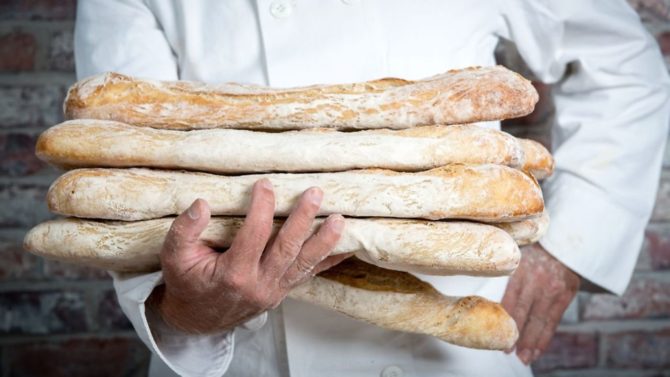All about the French baguette: a cultural icon

No French lunch or supper would be complete without a crusty baguette – discover its interesting history

Think of France and you can’t help but think of the crusty baguette. Split in two and stuffed with creamy camembert or meaty pâté, spread with dollops of butter and homemade jam and dunked in bowls of coffee or cut into crusty hunks and lightly toasted to accompany French onion soup, the long thin Latin loaf has been a quintessential part of French daily life since the 18th century.
Humble beginnings
There are several theories on the origins of the French baguette: according to one legend, Napoleon Bonaparte decreed that bread should be made in long thin sticks in order to fit into the pockets of his soldiers.
Another much-loved myth says that when work began on the Paris Métro in 1898, labourers were brought in from all over France to work on the groundbreaking project. Because of violent arguments between the different groups of men, bakers were asked to create a bread that could be torn, rather than cut, so that knives could be outlawed.
One final theory suggests that the iconic Gallic bread was the cause of the French Revolution, since bread was the mainstay of the French diet and the peasants rioted at the sight of the nobility eating the crusty white sticks while they faced shortages and famine.
Whether or not the baguette caused the fall of the Bastille, in 1793 the post-Revolution government decreed: “Richness and poverty must both disappear from the government of equality.

“There will no longer be a bread of wheat for the rich and a bread of bran for the poor. All bakers will be held, under the penalty of imprisonment, to make only one type of bread: The Bread of Equality.”
Law of the land
Over the following decades as wheat became cheaper, baguettes were a common sight and foreign visitors remarked on the size of the iconic bread sticks.
“Housemaids were hurrying homewards with their purchases for various Gallic breakfasts, and the long sticks of bread, a yard or two in length, carried under their arms, made an odd impression upon me,” one American visitor commented.
In order to control these excesses, in 1920 a law decreed that the iconic loaf should have a minimum weight of 80g and a maximum length of 40cm. This first piece of official ‘baguette legislation’ acknowledged the importance of the baguette, as part of the French lifestyle.
No one really knows who invented the modern-day baguette, but it’s said that the man who invented the croissant, Vienna-born baker August Zang, facilitated the loaf’s creation by installing France’s first steam oven, which made it possible to bake loaves with a crisp crust and a fluffy centre, in his Boulangerie Viennoise at 92, rue de Richelieu in Paris in 1839.
Later, in the 1920s, a law was passed forbidding bakers to do any work before 4am. Since the long thin baguette could be prepared and baked more quickly than larger loaves, it was the only bread that bakers could prepare in time for breakfast.
Daily bread
The baguette de tradition Française is made with a light yeasty dough which is kneaded and folded, the surface is slashed and then it’s left to rise in a basket lined with couches or cloths, then baked in a special oven or contained in baguette-shaped perforated moulds.
There have been plenty of baguette spin-offs too, including the thinner tube-shaped loaf called the flûte and an even thinner version called a ficelle. There is also a short and stubby version of the baguette known as the baton.
Used to signal French-ness in countless movies, the crusty stick of bread has starred alongside movie idols ranging from Brigitte Bardot to Gerard Depardieu and Liam Neeson. Unlike many actors, however, this culinary star of French kitchens will never go out of fashion.
Liked this article? You might also like…
Share to: Facebook Twitter LinkedIn Email
More in french icon


